History Mass communication in latin america
Hello my dear Steemians, in my publications I usually talk about art and the most wonderful things of the popular traditions of my country, when I talk about culture I can actually be analyzing any fact that transcends the everyday, that's why the following publication is dedicated to one of the most significant events of the last century, one of the milestones that marked the end of a mechanical and analogical era to give way to a virtual era in mass communication. An unprecedented event that marked the culture on the globe.
ATTENTION: the following publication is of historical and cultural character, it does not respond to any partisan political fact.
EARLY BIRD
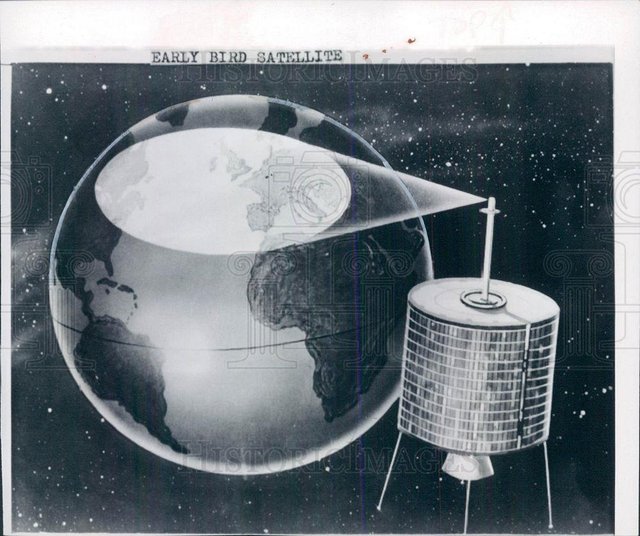
Advertising of the Early bird before its launch.
Source
One of the most important events of the era of space communications was the launch and placement in orbit of the "early Bird as the first satellite for commercial purposes, was the master play of the United States of America against the position of the extinct USSR in a war that was finally cooling.
On the other hand, the engines were warming up to start operating the satellite for commercial purposes, at that time we did not know the impact it would have, but today we can see better how it goes. We have a world totally connected to a super-satellite system that sends and receives information in fractions of a second.
The communication had changed completely, that story of messengers on foot, wagons, horses, birds, canoes and even the famous messengers of gengis kan used in the Mongol empire had been closed.
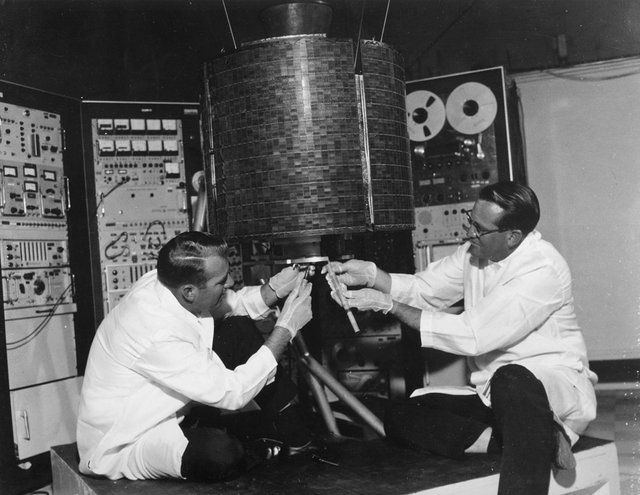
Scientists at NASA adjusting Early Bird operating parameters.
Source
It is incredible that only a century and a half after Abraham Lincoln's death, the news of his death was known in London 12 days later, a year later (1866) the first telegraphic cable between the United States and London eliminated that lapse of 12 days, and the time improved substantially, a new radiotelephone service crossed the Atlantic in 1927, but it was not until 1956 when the first telephone cable with amplifiers came into operation with an initial capacity to receive thirty-six simultaneous calls in both directions. According to data from the time for 1962 expected an increase of 4 million calls, data that had calculated until the years 80´s that would be about 100 million calls.
The Early Bird Satellite was launched from Cape Kenedy on April 6, 1965. Its commercial use began on July 28 of the same year, that day President Jhonson spoke by telephone with the leaders of France, Germany, Switzerland, Russia and Great Britain.
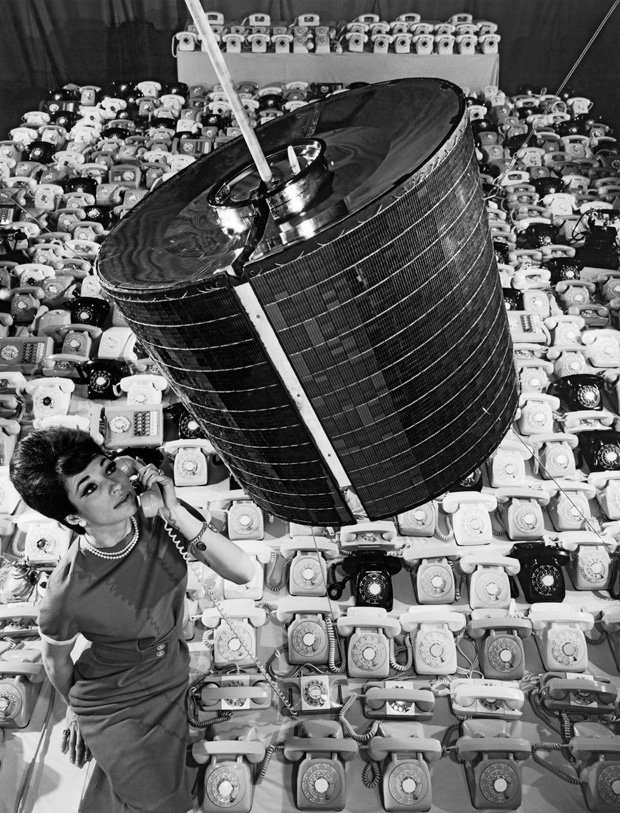
Advertising of the benefits of Early Bird.
Source
His ability to broadcast simultaneously was demonstrated in May 1965 in a television broadcast estimated at 300 million people between Europe and the United States of America. Another celebrated broadcast was that of Pope VI from Rome on May 3 of that same year.
These broadcasts were complemented with the first extraterrestrial transmission of Apollo 8 around the moon.
By 1970 INTELSAT III was orbiting to replace Early Bird, due to a notable increase in communications.
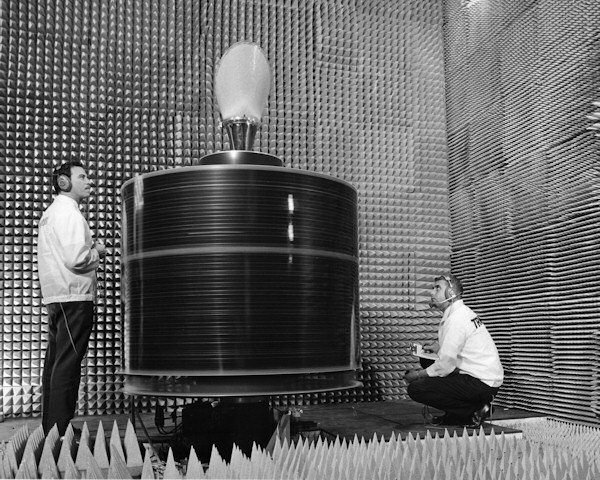
INTELSAT III with much more capacity makes Early Bird obsolete.
Source
COMSAT
The resounding success of Early Bird obliges the United States Congress to recommend the creation of a private equity company to be in charge of starting the serial construction of satellites for a telecommunications company, after verifying that satellites could be used as relay stations to send and receive information.
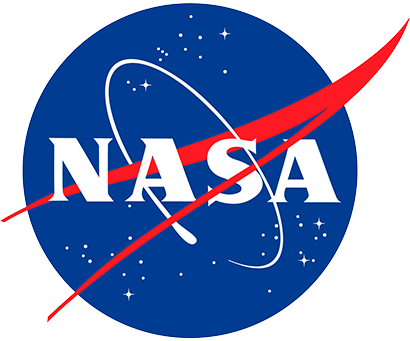
NASA logo. Company in charge of the construction and orbiting of the satellites .
Source
The creation of the 1962 law for communications satellites was sanctioned by Congress. This is how COMSAT (a satellite communications corporation) with headquarters in Columbia was quickly born.
The corporation was established with a capital of 200.000.000.00 resulting from the sale of shares for a value of 20 dollars a share. Even so, attempts were made so that more public investment in this company 50% was to give into the hands of important companies in the field of communication, so it was that AT&T (American telephone and telegraph company) acquired for the time 29% of the commercial capital of COMSAT; ITT (international telephone and telegraph) with 10%; GT&E (general telegraph and electronics) the 3.75% and finally RCA Communications kept the 2.5% at the end of the round of acquisitions of shares of the company at least 150,000 people invested blindly in this company.

Old AT&T logo.
Source
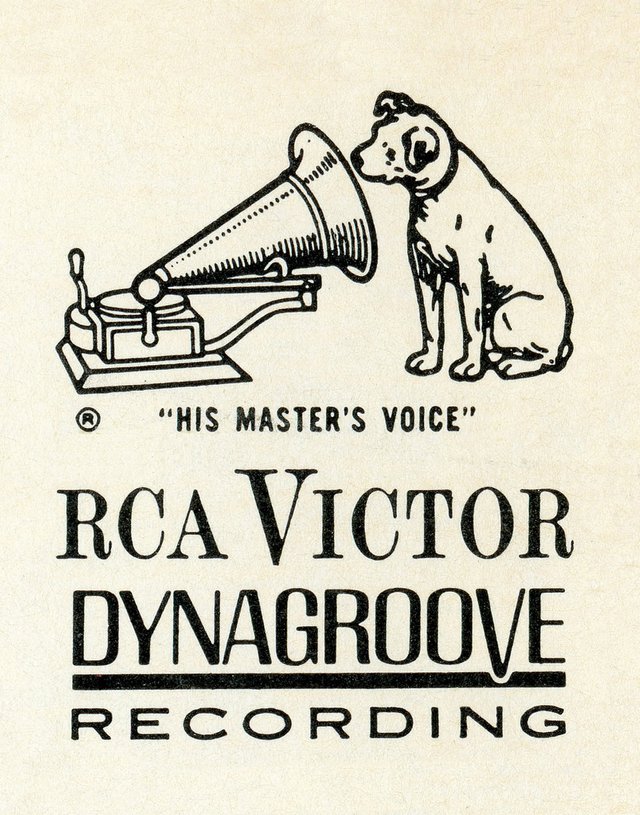
Old RCA logo.
Source

These were the main ones that continue to dominate the telecommunications market today.
Source
At first, it was not known what use to give to satellites, Latin American countries pointed to a purely commercial use, while countries such as Russia, India, and Japan already had great results encouraging exclusively educational programming.
Thus began our history in telecommunications, between educational and cultural programming and commercial programming countries saw this technology as a new tool, barely crawling in this world full of innovation.
This incredible expansion was thanks to the initial investment made by the United States of America in the South American countries, giving resources to build the earth stations that would allow the reception of the signal of the nascent channels. Although at that time 1970 there were still not enough T.V. receivers in Latin America to justify the millionaire sum of a satellite reception booth, something that the countries of South America with precarious economies could not afford.
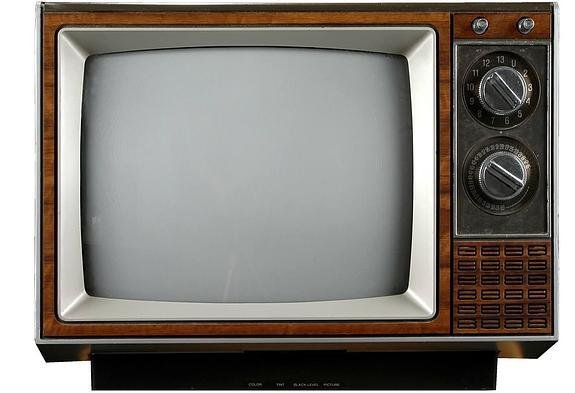
TV in the '60s.
Source
But the fact that Latin American countries did not have the per capita income to enjoy the new technological advance, at the same time developed excellent criticisms that we will analyze below.
Latin America's first opposition to the use of satellite technology
The first source of opposition in the 1970s to the use of satellite technology for educational purposes is economic. The high cost of television receivers would make the program unsuccessful.
If we count that the per capita income for that time was 300 or at most 400 $, with that income it was impossible for people to enjoy the benefits of the satellite, in this case especially aimed at the poor and illiterate, however, countries like Colombia, the government of that country, bought 30,000 receiver units and sold them to sectors of the population with low income, at cost, free of obligations and taxes and with long terms for payment.

family watching TV in the '50s.
Source
Even Japanese T.V. construction companies managed to build a special model for Latin America, a simple model with a single channel synchronized with the ground station, thus significantly reducing the cost of production.
There was opposition, but at the same time, there were alternatives so that Latin America would not lag behind technologically.
The second source of opposition
Without a doubt, this was the problem that was not carefully studied. For observers of the time, the use of satellites could become a powerful instrument of cultural and intellectual penetration and colonization by the United States in Latin America, the argument was repeatedly cited by the fact that the lower the level of education of a people, the stronger is the influence of the media on it.

Uncle Sam, U.S. War Propaganda Figure.
Source
So since then, Latin America began to use the educational patterns of the United States given the fact that most Latin American countries were not able to produce their own programs on a large scale.
The Third Source of Opposition
Another source of opposition to the use of satellites for the time in Latin America, were nothing more and nothing less than foreign companies, especially North American, since they were companies that had invested in infrastructure related to cables, radiotelegraph and other aspects of mass communications of the time, such works for the effect of the use of a satellite would remain unused and would be replaced by the use of satellites.
It is strange that for many satellites that are in orbit today, ironically submarine cables are still being used. And there are millions of miles still in use today.

Radiotelegraph of the Second World War.
source
The fourth source of opposition
Dictatorships were Latin America's nightmare for most of the last century. They were against satellites for educational purposes. This was due to the recurrent censorship that dictators applied to the media.
Although not everyone was against many dictators of the time used the new technology for ideological indoctrination, classic characteristics of any totalitarian system, it is enough to remember the effective use that Hitler gave them in Germany.

Nazi school during World War II.
Source
Teachers and students were exposed to pressure from totalitarian parties, the distinction between education and propaganda became confusing in moral terms and education is concerned.
IDEOLOGICAL IMPLICATIONS AND CONCLUSIONS
Between debates and disputes over whether to generate educational programming, the critics of Latin American intellectuals who argued that they would suffer an intellectual invasion or colonization were divided. Questions like Who is going to be in charge of controlling the signals to be transmitted? What kind of content will TV have?
And it was obvious that the idea of having programming under schemes of North American culture without a place for programming with cultural elements of Latin America would mean an unprecedented cultural deformation, introducing factions, people with customs, artistic forms, language that does not fit with the mentality of the Latin American who has a culture very marked by the popular.
Without any doubt at present in Latin American countries we can observe how the forms of consumption directed towards brands from the United States is one of the most idealized facets of the Latin, have been lost without end of traditions and has crushed the apparatus of production, becoming something else if not consumers and a reflection of North American society.
But not only the resistance towards the foreign and without falling into xenophobic terms. But we are no longer we are repeaters of cultural patterns not only of our neighbors of the north but also of other latitudes, it is common to see a lot of artistic talent directed towards ideas of concept of Asian, European art, leaving behind the iconographic legacy of our aboriginal peoples that had a system of organization, art, politics. We did not succeed in overcoming Spanish colonialism and were attacked again with other types of weapons.
All that has been expressed, of course, is in the excellent performance that communication has today. Social networks were the last play of the mass media, but it also started badly. With social networks centralized for their own benefit and not that of the community, but repeating again, the good is present in everything, decentralized initiatives bor.
So far the present publication I hope it has been to your liking, thank you for reading
SPECIAL PUBLICATION FOR STEEMIT

Congratulations! Your post has been selected as a daily Steemit truffle! It is listed on rank 25 of all contributions awarded today. You can find the TOP DAILY TRUFFLE PICKS HERE.
I upvoted your contribution because to my mind your post is at least 6 SBD worth and should receive 87 votes. It's now up to the lovely Steemit community to make this come true.
I am
TrufflePig, an Artificial Intelligence Bot that helps minnows and content curators using Machine Learning. If you are curious how I select content, you can find an explanation here!Have a nice day and sincerely yours,

TrufflePigYour post has been upvoted and will be exhibited in our blog.
We are a project that supports art and culture through STEEM, join our community:
https://discord.gg/fC5jcDF